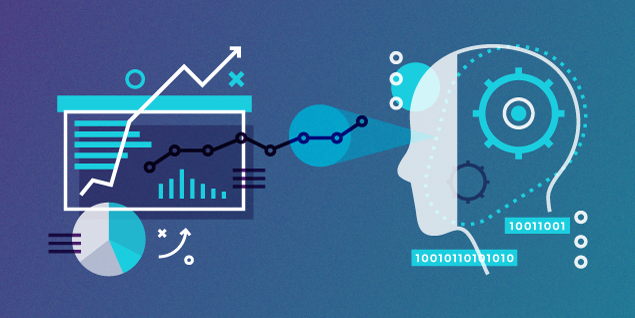Predictive analytics employs statistical techniques to forecast future events based on historical data. Initially, methods such as regression analysis, classification, and clustering analyze trends and patterns. For instance, regression analysis predicts numerical outcomes by establishing relationships between variables, whereas classification sorts data into predefined categories. Similarly, clustering groups similar items to identify distinct segments within data. Significantly, the role of AI in predictive analytics enhances these methods by automating data processing. It also refines accuracy, allowing for more complex, adaptive models that evolve with incoming data. Consequently, AI-powered analytics efficiently handles vast datasets and complex variables, transforming predictive capabilities across various industries.
AI Technologies Driving Predictive Analytics
AI technologies have become pivotal in predictive analytics, with machine learning, deep learning, and neural networks at the forefront. Machine learning algorithms learn from data patterns, thereby enhancing predictions without explicit programming. Deep learning, a subset of machine learning, utilizes neural networks with multiple layers to process complex data inputs. This improves the accuracy of forecasts substantially. Consequently, these neural networks mimic human brain functions to detect subtle nuances in massive datasets.
The ability of AI to continually refine predictions as new data becomes available underscores its role in predictive analytics. For example, in finance, AI-driven models predict stock movements by analyzing vast amounts of market data and consumer behavior. Furthermore, these technologies enable the processing of unstructured data, such as images and text. This opens new avenues for predictive insights in areas previously constrained by data type limitations. Therefore, AI not only accelerates the predictive process but also enhances its precision, proving indispensable in data-driven decision-making.
Benefits of AI in Predictive Analytics
The role of AI in predictive analytics introduces several transformative benefits, chief among them being enhanced accuracy and efficiency. AI algorithms are adept at processing and learning from large volumes of data at a pace far exceeding traditional methods. Consequently, this rapid analysis not only saves valuable time but also significantly reduces the margin of error in predictions.
Moreover, AI excels in handling big data. This allows companies to leverage extensive datasets that were previously too cumbersome to analyze effectively. Thus, AI’s ability to manage and scrutinize vast arrays of information enables businesses to make informed decisions based on comprehensive data insights.
Furthermore, AI reveals complex patterns and relationships within the data that might elude conventional analytical techniques. For instance, subtle correlations in consumer behavior or intricate market trends are more readily identified through AI models. Therefore, by uncovering these hidden patterns, AI contributes to more nuanced understanding and forecasting. This greatly benefits sectors like marketing, healthcare, and finance. Each of these capabilities underscores the critical advantage of integrating AI into predictive analytics strategies, fostering more dynamic and precise decision-making processes.
Challenges and Limitations
While the role of AI in predictive analytics is revolutionary, it is not without challenges and limitations. One of the primary concerns is data privacy. As AI systems require access to vast amounts of data to function effectively, the potential for sensitive information exposure increases. Consequently, organizations must adhere to strict data protection regulations, which can complicate AI implementations.
Additionally, the effectiveness of AI in predictive analytics heavily relies on the availability of large, high-quality datasets. In scenarios where data is scarce or of poor quality, AI models may produce inaccurate predictions. Furthermore, these models often require continuous data inputs to maintain accuracy, posing a challenge in dynamic environments where data collection is inconsistent.
Bias in AI models represents another significant challenge. If the training data is biased, the AI’s predictions will inherently carry those biases, leading to skewed and potentially unfair outcomes. This issue is particularly problematic in sectors like recruitment, lending, and law enforcement, where biased AI could lead to discrimination.
Moreover, interpreting the results generated by AI can be complex. AI-driven models, especially those involving deep learning, often act as “black boxes,” with their decision-making processes being opaque and difficult for humans to understand. This complexity can lead to challenges in gaining trust from stakeholders and effectively integrating AI into decision-making processes. Addressing these challenges is crucial for harnessing the full potential of AI in predictive analytics.
Case Studies and Real-World Applications
The role of AI in predictive analytics is vividly illustrated through its application across various industries, each benefiting from enhanced decision-making capabilities. In finance, AI-driven models are used for credit scoring, where they analyze customer data to predict loan repayment probabilities. This allows banks to make more informed lending decisions, thereby reducing default rates and optimizing their loan portfolios.
In healthcare, predictive analytics powered by AI plays a crucial role in patient care and management. For instance, AI models predict patient readmission risks by analyzing patterns in historical patient data, helping hospitals allocate resources more effectively and improve patient outcomes. Additionally, AI is used to forecast disease outbreaks, which aids in preemptive health management and response planning.
The marketing sector benefits from AI through customer behavior prediction. AI analyzes purchasing patterns and social media engagement to forecast future buying behaviors, enabling marketers to tailor campaigns more effectively. As a result, businesses can achieve higher conversion rates and customer satisfaction by delivering personalized marketing messages.
In retail, AI-driven analytics helps in demand forecasting and inventory management. By predicting future sales trends based on historical sales data, weather conditions, and economic indicators, retailers can optimize their stock levels, reducing both overstock and stockouts, thus maximizing profit.
These case studies underscore the transformative impact of AI in enhancing the precision and efficiency of predictive analytics, significantly benefiting various sectors by enabling smarter, data-driven decision-making processes.
Conclusion
In conclusion, the role of AI in predictive analytics is reshaping how industries operate by providing deeper insights, enhancing decision-making, and improving efficiency. From finance to healthcare, marketing to retail, AI technologies such as machine learning, deep learning, and neural networks are proving essential for analyzing vast amounts of data and uncovering patterns that are not visible to the human eye. While there are challenges such as data privacy concerns, the need for large datasets, biases in models, and the complexity of interpreting AI-driven results, the benefits far outweigh these hurdles. By continuously addressing these challenges, AI in predictive analytics can unlock unprecedented opportunities for businesses to thrive in an increasingly data-driven world. As technology evolves, so too will the capabilities of AI, promising even more sophisticated analytics solutions that will further transform industries globally.


